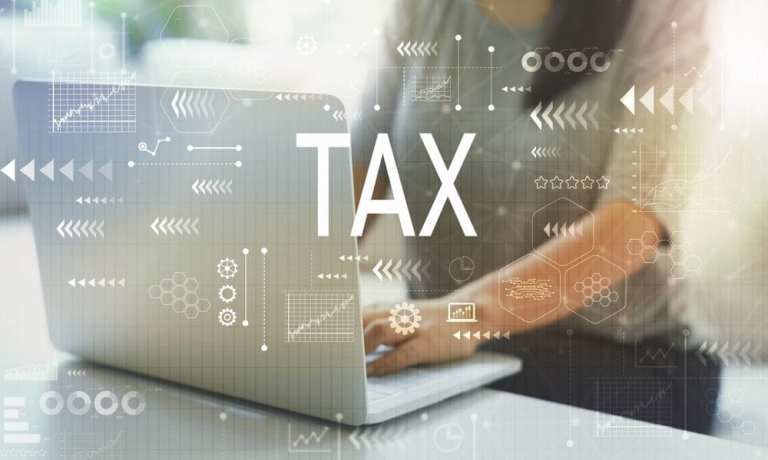Trending: Merchants Struggle With The (Un)Certainty Of eCommerce Sales Taxes

They say that death and taxes are the only certainties in life. A recent Supreme Court ruling makes eCommerce taxes a certainty – but how they are computed and collected varies wildly. Avalara President and Chief Operating Officer Amit Mathradas tells Karen Webster why its crucial to leverage technology in order to track what’s owed, and where.
The only certainties in life, the saying goes, are death and taxes.
We’ll underscore the certainty of the latter — taxes — for eCommerce firms and sales taxes, especially.
Although taxes may be certain — just how much tax is due, and where, and perhaps even when, are all variables that are far from certain.
It’s no small matter as eCommerce sales are expected to be worth as much as $659 billion in the United States, alone, next year, and as 230 million consumers shop online across dedicated marketplaces and platforms that serve third-party sellers.
Merchants, of course, want maximum torque on the top line, and yet computing and collecting taxes can be a fragmented experience, rife with consequences if they unwittingly run afoul of domestic or international laws.
The U.S., in particular, has seen a shifting tax landscape in the past several months, in the wake of the June 2018 Supreme Court decision in the case known as South Dakota vs. Wayfair.
To summarize that decision, states can tax sales by companies that do not have a physical presence within the state. And yet, tax policy remains a bit of a patch quilt.
In some states, firms are exempt until they generate $50,000 in sales within that state’s borders; in other cases (such as South Dakota), that threshold stands at $100,000.
All sorts of other considerations come into play, and may even supersede the “dollar threshold.” For example, a firm may be taxed if it has a single employee working within a particular state.
As far as collection goes, some states require online marketplaces to handle tax collection and remittance for sellers; others mandate that the sellers process the taxes.
Against that fragmented backdrop, Avalara President and Chief Operating Officer Amit Mathradas told Karen Webster that eCommerce firms, especially smaller ones, are navigating a tax collection environment that increasingly needs technology and automation to ensure compliance.
Sales taxes, as he said, have evolved from being “something that was nice to do — in many cases voluntary — to something that is now mandated, in some form or another, by all states.”
Add taxes, then, to the list of everyday operating concerns for the SMB, on top of examining online conversion rates, worrying whether payments are being settled in a timely manner and considering shipping costs.
“Now I’ve got to worry about ‘do I have the right taxes and do I have it all down to the nitty-gritty level of how is it being collected?’” he said of merchant concerns.
The critical question for an executive is whether they comply with each state and the varying tax considerations within each state.
That’s no easy task when there are 12,000 jurisdictions across the United States alone. The devil is in the details, of course.
Taxes, Local And Complex
Mathradas offered up a few anecdotes of just how complicated taxes can be — at the most local of levels.
In one case, in a town in Colorado, the tax rate differs wildly between two adjacent houses, due to jurisdiction. One house’s local sales tax rate is 9 percent, the neighbor’s is 4.5 percent. There can be a significant impact on the total cost of a $2,500 laptop bought online with those varying rates — perhaps even to the point where a shopping cart is abandoned.
Want Other Examples?
A bagel shop, depending on its location, need not levy a tax on a to-go order, but must do so if the customer opts to dine in. In some cases, ordering doughnuts can have an impact on both bottom lines (and waistlines). That’s because of a meals tax in some states where orders of more than six donuts are considered more than a single serving and therefore are not subject to tax — on the assumption that no one person could be taking on that many carbs for a meal.
In another example, spotlighted by Mathradas, states have broad leeway in when they offer tax holidays for back to school shopping. That can be critical for a smaller merchant that competes with Target or other superstores hawking school supplies (you can be sure, of course, that Target is on top of tax holidays).
Keeping track of all the details can be mind-boggling, and with a nod to his own firm’s automated sales tax solutions that integrate with hundreds of partners to track tax policy changes and automate reporting and remittance, Mathradas said that more merchants are embracing technology to keep track of what they need to do in order to calculate, collect, file and remit taxes.
Avalara also can help sellers operating on an international stage calculate duties and customs owed so they do not face the daunting prospect of absorbing returns from customers who may be charged those fees when items show up on their doorsteps.
At the seller level, awareness is prodded as their accountants are informing business owners about what needs to be done, and in other cases, the platforms across which they do business (eBay or Magento, for example) are alerting their sellers to changes.
Eventually, he said, at least some of the gray areas, where tax policy can be fluid right down to the item level — will clear up.
“There will be standardized rules and standardized practices over time,” Mathradas told Webster. “But for right now, it’s a complex world for merchants, and at least some of these challenges will never go away.”